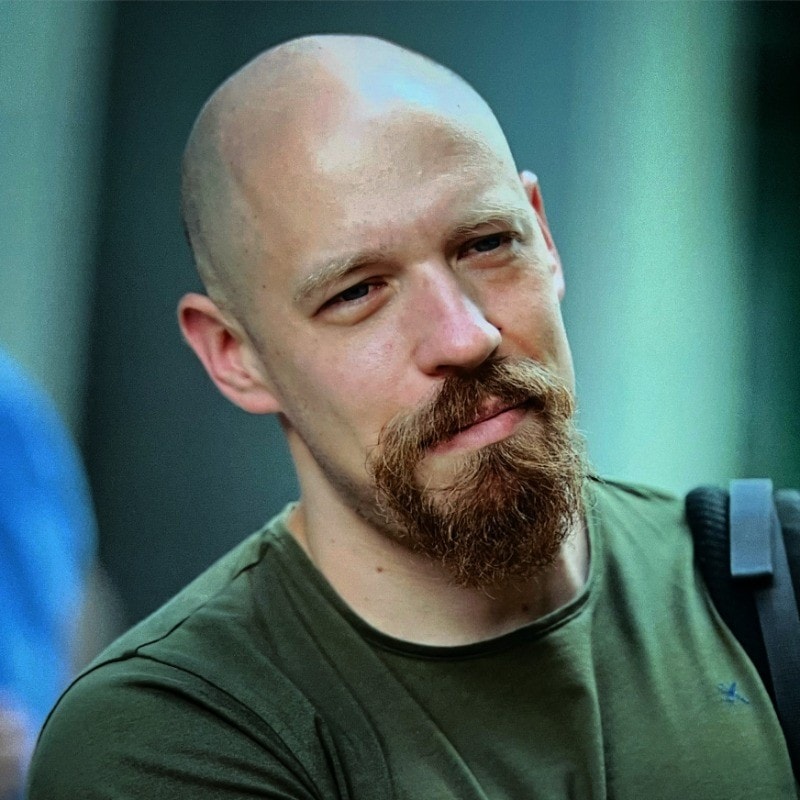Engineer and producer Ross Hogarth explained what really made Van Halen stand out when they emerged back in the day, pointing out one particular thing about Eddie Van Halen’s lead parts that might get overlooked.
If you’re not familiar, Hogarth worked closely with the band for their final album, 2012’s “A Different Lind of Truth.” But although he didn’t collaborate with Van Halen before that, he was fairly close with them during the process and — above all — has great experience in the field to know what made Van Halen so special back when they recorded their self-titled debut album from 1978.
“There was no such thing — except on only a couple of songs — like a rhythm guitar part and then a solo,” Hogarth offered during his recent interview with Anthony Marinelli (transcript via Ultimate Guitar). “A lot of music is built on rhythm guitars, and then you just gonna do the solo.”
“And there were only two songs, one had a stereo guitar that he wasn’t going to solo on. And the other, because of the rhythm part over the solo — it was a designated rhythm part that he was going to solo over.”
The most important aspect here was how the band members bounced off of each other, so to speak. And that’s where we get to the main issue. In Van Halen, a guitar solo is more than just a guitar solo. It’s how other instruments follow what Eddie is doing, namely his brother Alex. Hogarth pointed out that “what made Van Halen really super special was the interaction.” He then added:
“Each guitar solo was going to be different than the next one. Because it was just coming from above, it’s coming from the universal source. And when those guys were in that moment, everything Alex did was sort of reactive to what Eddie played. And that’s why most of their music is just one guitar part.”

Speaking of that, Ross also commented how any engineer or producer or any other technical personnel is there to help the band achieve their greatest potential:
“Part of the job as a producer or an engineer — we take our technical [side], we try to merge that with the form fits function of the creative.”
With this in mind, going back to Van Halen’s debut record, Ross also explained how the producer Ted Templeman was there to help them get the best out of it.
“First off, Ted Templeman goes and sees them live,” he explained. “This band is just devastating live, they’re just unbelievable live.”
And there was also Donn Landee, who was more than happy to be working with this new band at the time. And interestingly enough, the early Van Halen was inspired by Montrose, a band featuring Sammy Hagar, who would eventually replace David Lee Roth. Ross said:
“And he puts them in the studio with Donn Landee, great engineer. They had already figured out a little bit about the sound of what they wanted by doing Montrose, Ronnie Montrose’s ‘Montrose’ record — ‘Rock Candy,’ which actually is Sammy Hagar singing, which is going to lead to later.”
“But to create a guitar sound on Eddie, they didn’t think about it first. The classic way of making records is that you don’t play the solo. You overdub the solo.”
Speaking of overdubbing, a thing that theoretically made the recording process easier was actually causing problems for Van Halen. And just like any band of the era, they were kind of expected to go down this path since it would make the album sound better. But it still felt weird to them, as Ross explained:
“Well, they’d never played any other way than just playing the whole song down. And Ed never had figured out — doubling guitars was not like a concept. Because to double guitars, you have to simplify it, because if it’s complicated, you have to memorize all the complications that you’re playing.”
“There’s a certain sound to double guitars. You can’t have a lot of humanity in each of the guitars, because then it’s messy. At first, they thought, ‘We’ll not have him play solos.’ And for the first few hours are tracking at Sunset Sound, they didn’t get anything they could keep.”
And then we go back to the aforementioned issue of them interacting with one another.
“Because every time it hits a solo, the song would fall on its face,” the engineer said. “Because the band had never played a solo without Eddie soloing. So no one knew what to play. Because everything Alex played was reactive to what Eddie’s playing as a solo. So if Eddie does a riff, Alex would do like a fill. And so all of that interplay.”
“It took that moment of coming into the studio and going, ‘We’re not getting anything what’s going wrong here,’ having to adjust and go ‘Well, why don’t you just play it the way you play it live?’ Just play it down live, the solo’s part of everything.”
“And that’s what led to Donn Landee trying to figure out. If I’ve got a mono guitar back in the day, how do I fill the space with it, not just coming down the center, eaten up the vocal, the bass, the snare, the kick? And that’s that first guitar sound, which is the guitar with the reverb moving over to the other side — delayed reverb.”
Photo: Warner Records (Van Halen Lineup 1984)


